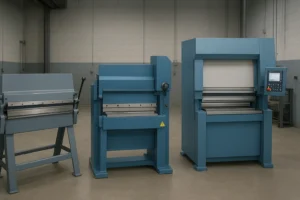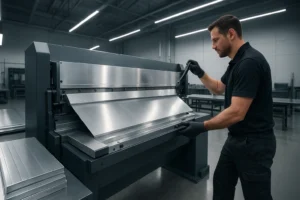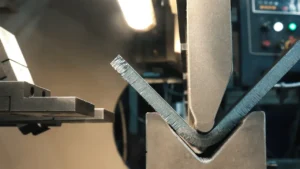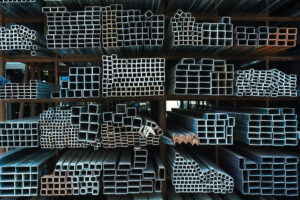Tapping is an essential process in the world of metalworking and manufacturing. Whether you’re a machinist, mechanical engineer, or DIY enthusiast, understanding the different types of metal tapping can help you choose the right tools, improve thread quality, and extend tool life. In this blog, we’ll dive deep into the various types of metal tapping methods, tools involved, and where each type excels.
What is Thread Taps?
Thread taps are specialized tools used to cut or form internal screw threads in a pre-drilled hole. These threads allow screws, bolts, and studs to be securely inserted, creating a strong and reliable mechanical connection.
Unlike external threading, which forms threads on the outside of rods or bars, thread taps focus on creating threads inside a hole. This process is essential for assembling machines, engines, pipes, and structural components, enabling secure and precise fastening.
Types of Thread Taps Based on Operation
Tapping can be broadly divided into manual and machine tapping:
1. Manual Tapping
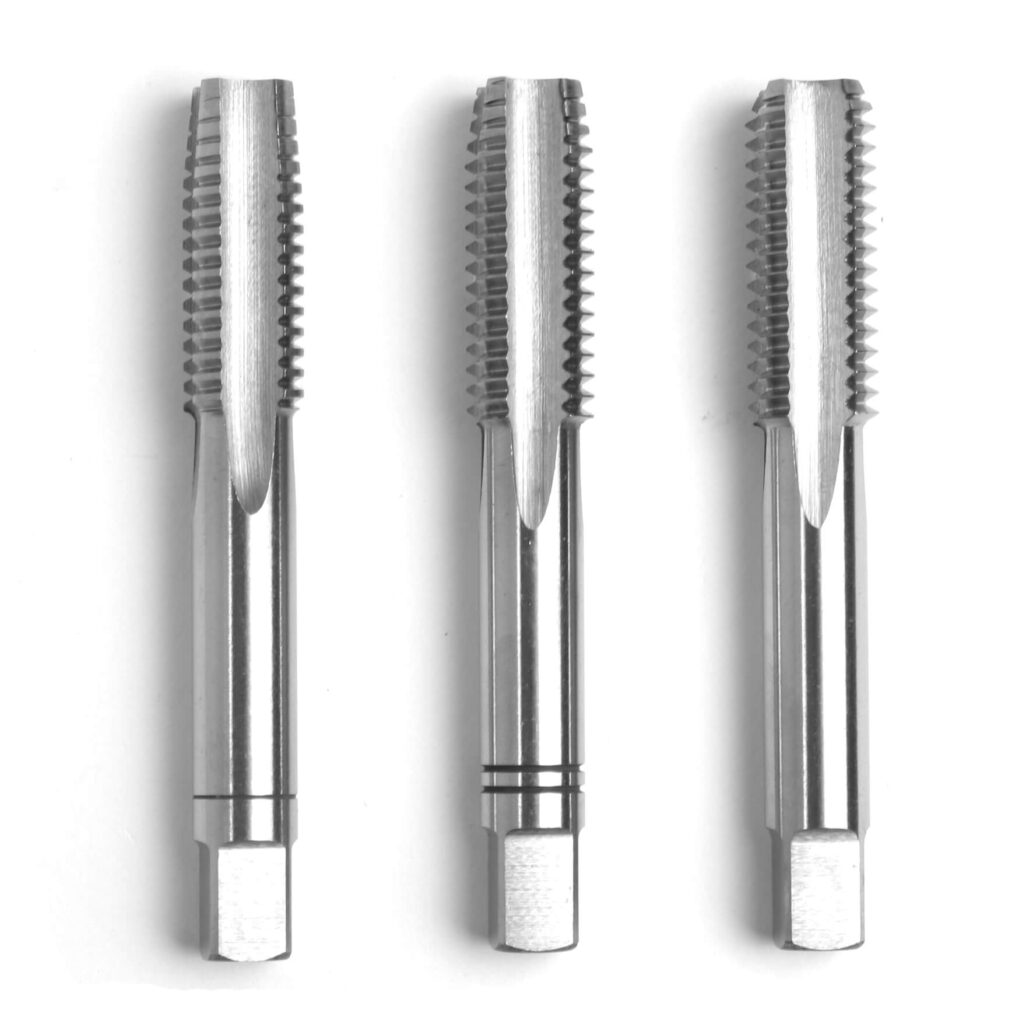
Manual tapping is done by hand using a tap wrench. It is typically used for low-volume jobs or when high precision is required in tight or hard-to-reach places. This method gives the operator more control but is slower and less suited for large production runs.
Manual tapping often involves a tap set, which includes:
-
- Taper Tap: Starts the threading process. It has a longer chamfer to ease alignment.
-
- Plug Tap: Continues threading after the taper tap.
-
- Bottoming Tap: Used to finish threads at the bottom of a blind hole. It has very little chamfer.
2. Machine Tapping
Machine tapping uses powered equipment, such as drilling machines, CNC mills, or lathes, to automate the tapping process. It is faster, more consistent, and ideal for high-volume production.
Key benefits of machine tapping:
-
- Better thread accuracy
-
- Consistent depth
-
- Reduced operator fatigue
-
- Integration with other machining operations
Machine taps are typically stronger and made from high-speed steel (HSS) or carbide for durability.
3 types of hand taps.
Taps come in various shapes and cutting styles, each suited for specific types of holes and materials. Below are the most commonly used types in metal tapping:
1. Taper Taps
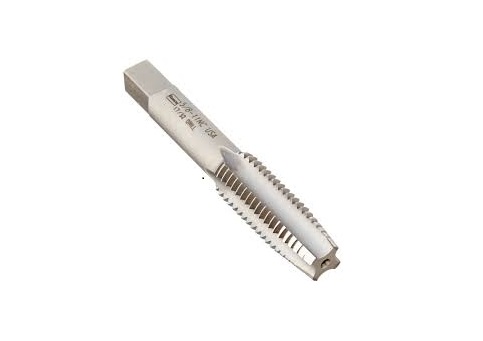
Taper taps are the first in a standard tap set and are designed to gradually cut threads into the material. They have 7 to 10 chamfered threads, making them ideal for starting a thread in through-holes and softer materials.
Use case: Starting new threads, especially in aluminum, mild steel, or brass.
2. Plug Taps
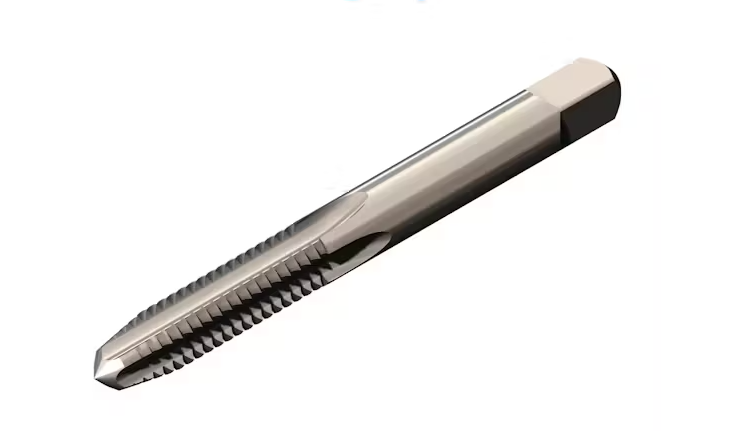
Plug taps are the most commonly used taps in general applications. They have about 3 to 5 chamfered threads and are used after a taper tap to continue threading deeper into the hole.
Use case: General-purpose tapping, especially when the hole is not too shallow or deep.
3. Bottoming Taps
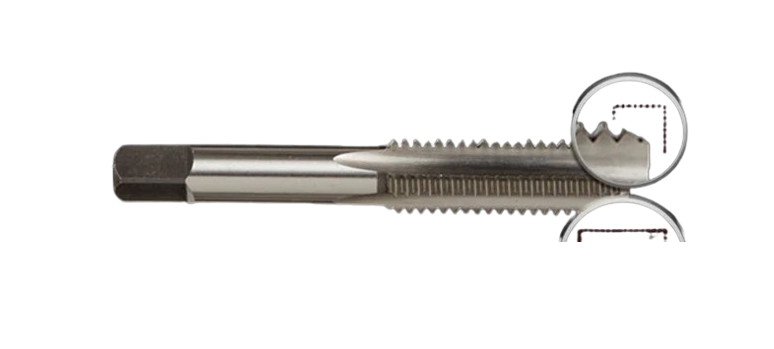
Bottoming taps have only 1 to 2 chamfered threads. They are designed to cut threads to the bottom of blind holes, where the tap cannot pass completely through.
Use case: Finishing the threads at the bottom of blind holes, commonly found in engine blocks, castings, and die work.
Types of Taps Based on Geometry and Function
1. Power Taps
Power taps are designed for use with power-driven tools such as drill presses, tapping machines, or CNC equipment. Unlike hand taps, they are built with stronger materials and optimized geometries to withstand higher speeds and torque during cutting. Their durability and efficiency make them perfect for high-volume production environments.
Use case: Fast, accurate threading in industrial applications, especially for harder metals or when large quantities of tapped holes are required.
2. Pipe Taps
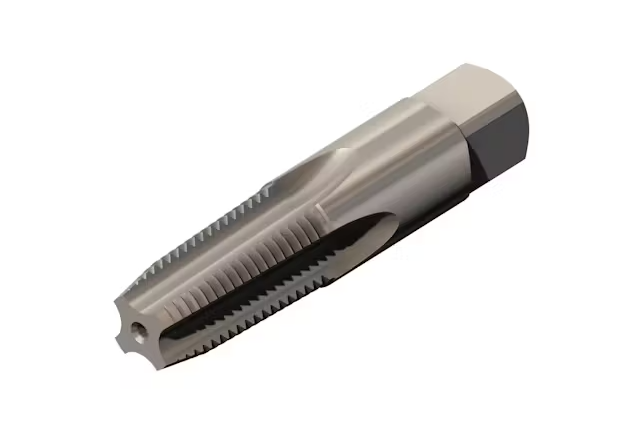
Pipe taps are designed to create tapered threads specifically for pipes and fittings, ensuring a tight, leak-proof seal. Unlike standard taps that cut straight threads, pipe taps cut threads that gradually narrow, making them ideal for fluid, gas, and hydraulic systems where secure connections are critical.
Use case: Plumbing, oil and gas pipelines, hydraulic fittings, and any application requiring pressure-tight threaded joints.
Specialized Taps for Metal Tapping
Beyond the basic hand taps, several specialized taps are designed for more demanding or specific applications.
1. Spiral Point Taps (Gun Taps)
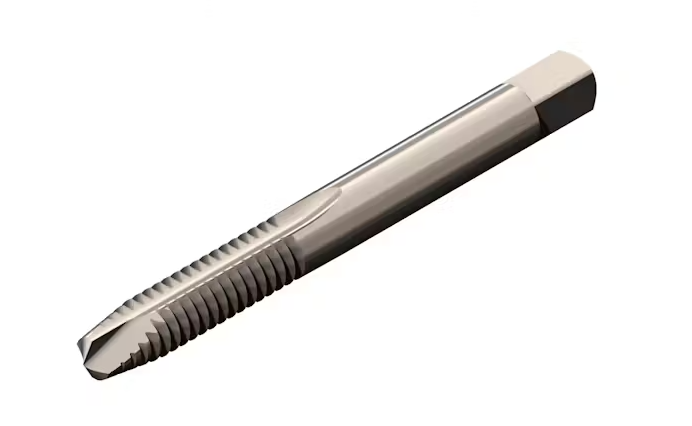
Spiral point taps have straight flutes but with a special cutting edge that pushes chips forward into the hole. This prevents clogging and is ideal for high-speed production.
Use case: Tapping through-holes in steel and other hard metals.
Advantage: Faster tapping, fewer broken taps, and better chip evacuation.
2. Spiral Flute Taps
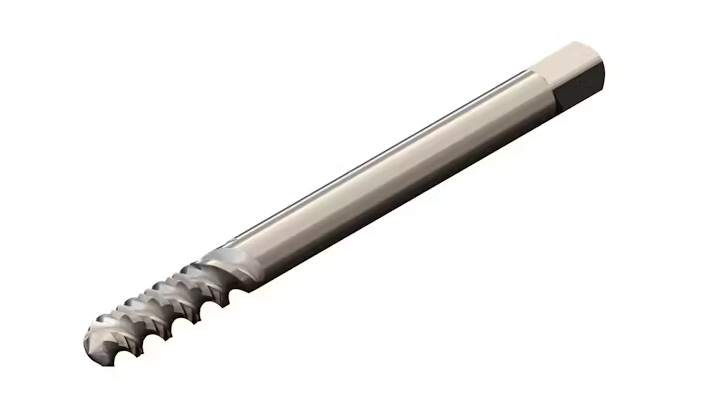
Spiral flute taps have fluted grooves that twist upward like a drill bit. These taps pull chips back toward the surface and are excellent for blind holes where chip removal is challenging.
Use case: Blind hole tapping in soft and medium-hard metals like aluminum and copper.
Advantage: Reduces the risk of chip clogging in deep or closed holes.
3. Thread Forming Taps (Roll Taps)
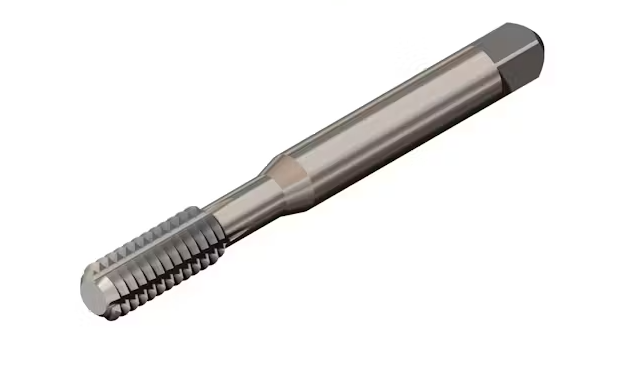
Thread forming taps do not cut material but instead displace it to form the thread shape. They are chipless and require a slightly larger pre-drilled hole.
Use case: Tapping ductile metals such as aluminum, copper, or soft steel.
Advantage: Stronger threads, no chips, longer tap life, and smoother finishes.
4. Master Taps
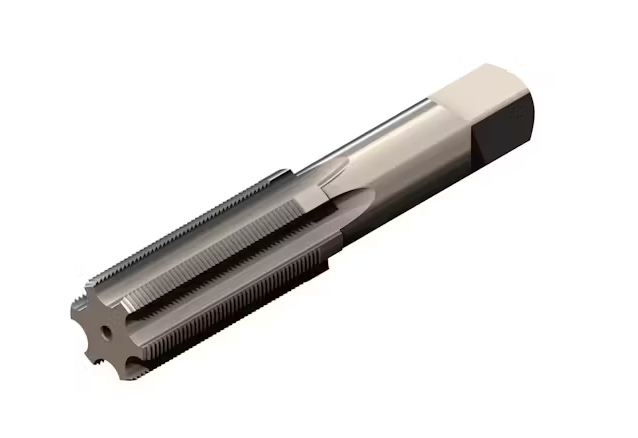
Master taps are versatile threading tools designed for general-purpose applications. They can handle a variety of materials and are often used when precision is required across different projects. Unlike specialized taps that focus on blind holes or high-speed machining, master taps provide a reliable balance of strength, accuracy, and ease of use.
Use case: General threading tasks in shops and workshops, suitable for creating accurate threads in a wide range of metals including steel, aluminum, and brass.
5. Machine Taps
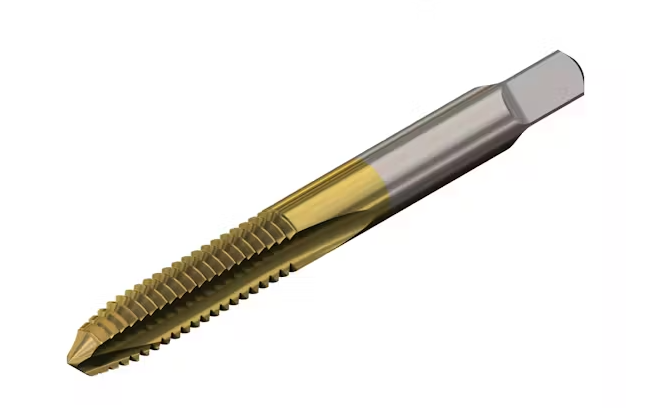
Machine taps are specifically designed to be used with power-driven equipment such as drill presses, lathes, or CNC machines. They are built to cut threads quickly and consistently, handling higher speeds and torque compared to hand taps. Their strong construction and precise geometry make them ideal for mass production and industrial applications.
Use case: High-volume and precision threading in harder metals and manufacturing environments where speed and accuracy are essential.
6. Combined Drill and Tap
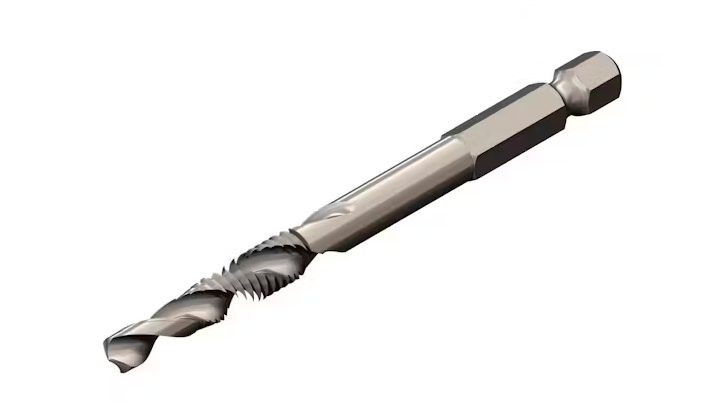
Combined drill and tap tools are multi-functional cutters that drill a hole and cut threads in a single operation. By combining two processes into one, they save time, reduce tool changes, and improve efficiency in production environments. They are especially effective when used with CNC machines for high-speed, automated operations.
Use case: Fast and efficient drilling and tapping in production runs, particularly useful in CNC machining for aluminum, mild steel, and other machinable metals.
Choosing the Right Tap for the Job
When selecting a tap, consider the following factors:
1. Hole Type:
-
- Through-hole: Spiral point taps work best.
-
- Blind hole: Use spiral flute or bottoming taps.
2. Material Being Tapped:
-
- Soft materials: Taper or plug taps.
-
- Hard metals: Use high-speed steel taps or coated taps for better performance.
-
- Ductile materials: Forming taps are ideal.
3. Production Volume:
-
- Low volume: Manual hand taps are sufficient.
-
- High volume: Machine taps with proper lubrication and feed control.
4. Thread Strength:
Forming taps create stronger threads due to work hardening and better surface finish.
Tapping Best Practices
To ensure a successful tapping operation, follow these tips:
-
- Use proper lubrication: Reduces friction and heat, improving tap life.
-
- Drill the correct hole size: Too small a hole causes excessive friction; too large leads to weak threads.
-
- Back off the tap occasionally (manual tapping): Helps break and clear chips.
-
- Use the right RPM and feed rate: Especially critical in machine tapping.
-
- Inspect the tap regularly: Look for dull or chipped cutting edges.
Tapping vs. Thread Milling
In CNC applications, tapping is often compared to thread milling. While tapping is faster, thread milling offers more flexibility and control, especially in large or custom threads. Thread milling also produces less stress on the part and allows for thread repair without re-drilling.
When to use thread milling instead:
-
- Tapping very hard materials
-
- Need to produce oversized or custom threads
-
- Internal threads close to an edge or wall

